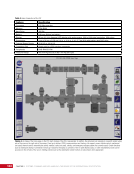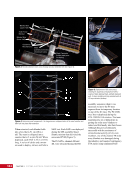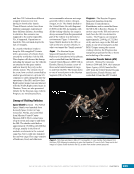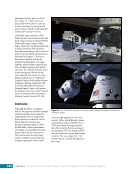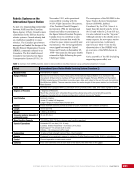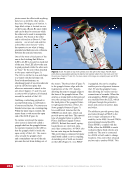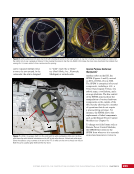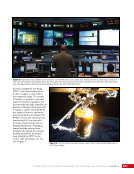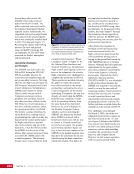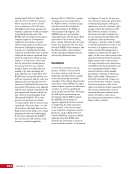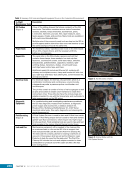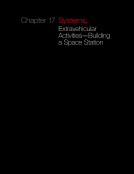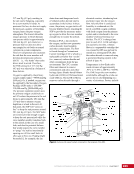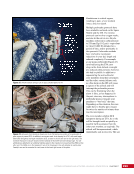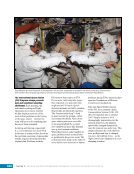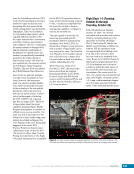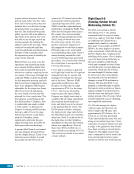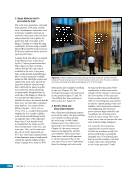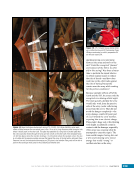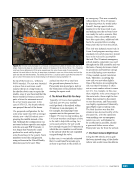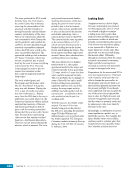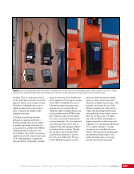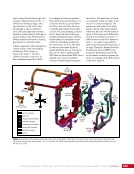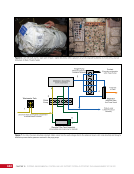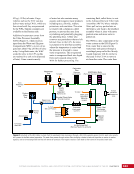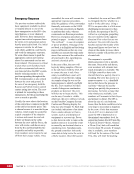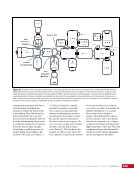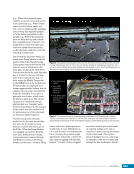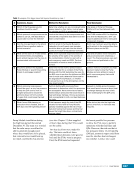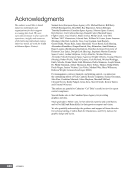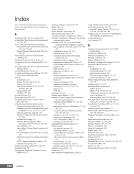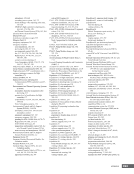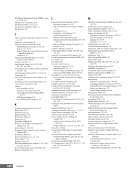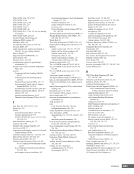CHAPTER 3 SYSTEMS: STRUCTURE AND MECHANISMS—THE INTERNATIONAL SPACE STATION’S SKELETON 52 and some electrically controlled— serve to reduce the exposure of the outer window pane to contamination from jet firings or material off- gassing, provide debris shielding for that outer pane, and block sunlight from entering the ISS cabin. How big are the windows? Size (diameter) of common ISS windows: n US hatch: 20.3 cm (8 in.) n US Laboratory: 51 cm (20 in.) n JEM (two): 51 cm (20 in.) n Cupola center: 70.6 cm (27.8 in.) n Cupola trapezoidal (six): 0.22 m area (322 in2) n Service Module Window #9: 48.3 cm (19 in.) None of the windows on the ISS are composed of a single pane of glass, nor is each pane as thin as one found in a home window. Rather, two panes of relatively thick glass maintain the pressure integrity of the module and, typically, there are additional thinner protective panes on the inside and outside of the window. That makes for a total of four panes. The inner protective pane (called the “scratch pane,” as it is intended to prevent the crews from inadvertently scratching the glass pressure pane) can be removed if necessary. A vacuum is drawn on the inter-pane space to prevent condensation from forming between the two panes of window glass. That is the purpose of the flex hose that Mike Foale is inspecting in Figure 19. That flex hose also proved to be an inviting hand hold for early ISS crew members over time, this resulted in the development of a small leak in that hose. A protective box has now been installed over these flex hoses to ensure they do not get bumped and start leaking, as shown in Figure 20. Figure 19. Expedition 8 Commander Mike Foale using the Ultrasonic Leak Detector in 2004 to pinpoint a small leak that had developed in one of the seals of the hose used to maintain a vacuum between the panes of glass within the large window of the US Laboratory. Once the leak point was identified, the hose was disconnected (which stopped the leak to space) until a replacement hose could be flown to the space station. Figure 20. The US Laboratory window with its shutter closed (noted by white cover visible through the window) and protective box covering its vacuum flex hose. Clockwise from the box is the handwheel crews use to open and close the shutter.
Purchased by unknown, nofirst nolast From: Scampersandbox (scampersandbox.tizrapublisher.com)








































































































































